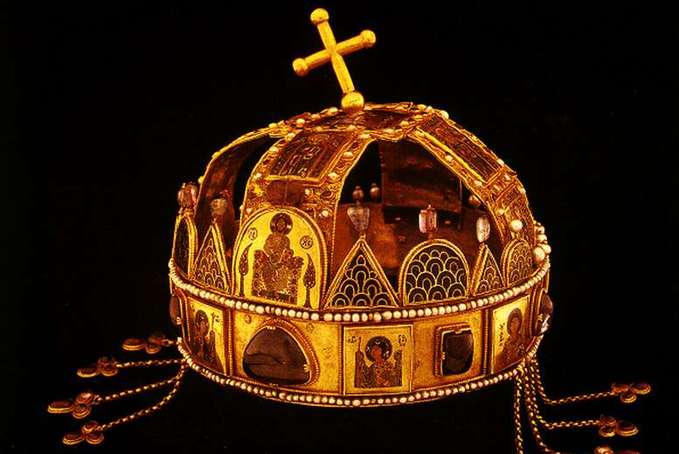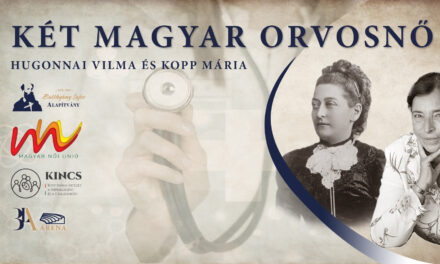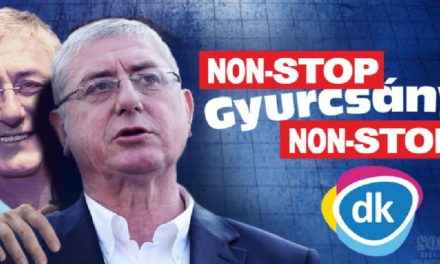Also worthy of attention is the struggle waged by the Prince-Primate to ensure that the Holy Crown, which fled to the West in 1945, was not returned to communist Hungary, which had been subjugated by the Soviet Empire.
After the guns fell silent on the battlefields of Europe, at the request of József Grősz József Mindszenty, as bishop of Veszprém, formulated the first pastoral speech of the Hungarian bishops, which became known on May 24, 1945. It reads that "the Holy Crown and the benediction-giving Saint Jobb, the ancient memories of Hungarian respect and grace, are in an unknown place". Although the decision of the Provisional National Government on May 25, 1945 only nominated the bishop of Veszprém to the vacant seat of Júsztinian Serédi The Béla Miklós took note of this on September 17.
The archbishop and cardinal of Esztergom spent 5,437 days, almost a decade and a half, almost a fifth of his life, within the walls of the United States Embassy in Budapest. From his elevation to the throne as the head of the Hungarian Roman Catholic Church until his arrest on December 26, 1948, as well as during his semi-captivity, he "attached great importance to the cause of the Holy Crown", and even afterwards, in the Pazmaneum in Vienna and on his evangelization trips abroad. Since the introduction and enshrining of the republic (then the people's republic) was contrary to the intentions and beliefs of the change in the form of government from its announcement at the end of 1945. He wrote and spoke so that the communist political power group gradually gaining exclusive power, a vassal of Moscow, could not acquire the crown jewels or transport them back to Budapest. In his letters and messages to the papacy and, above all, to the leaders of the American state, he suggested the Vatican as a place to keep the Holy Crown.
Already on February 10, 1946, he sent a letter to XII. Piusz , raising the issue of placing the coronation jewels in the Vatican. The Papal Secretariat of State supported his idea that, as it became known in Washington in April 1946, "until the Holy Crown of Saint Stephen can safely return to Budapest, it should be in the custody of the Apostolic Holy See". From the answer, it was clear and unambiguous - this fact prevailed all the way, until the ceremonial return of the coronation jewels - that the Americans took over the relics for safekeeping from the Ernő Pajtás.
On the night of May 31, 1946, a telegram arrived in Washington from Berlin to the Ministry of Foreign Affairs that the Apostolic Holy See had submitted a request on February 27, 1946, on behalf of the Catholics of Hungary, regarding the return of St. Stephen's crown to the Church. The following was recorded in the foreign affairs list of the American mission dated April 30, 1946:
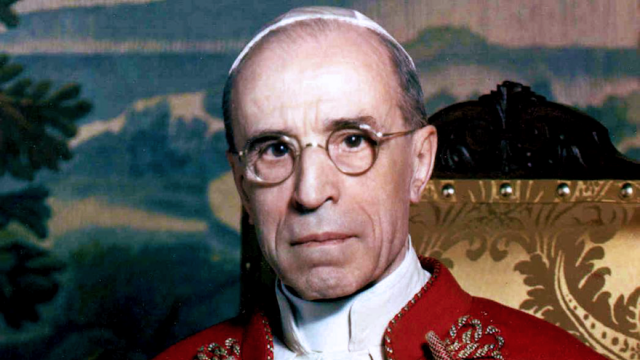
XII. Pope Pius (photo: vaticannews.va)
"The investigation shows that the crown in question was not forcibly taken from Hungary, but was handed over by the Hungarian authorities to the American army for safekeeping. Therefore, it does not fall into the category of goods to be returned as defined in the quadrilateral agreement. Therefore, the unilateral order of the authorities of the United States of America does not in any way violate the quadrilateral restitution agreement. After consultation with R. D. and OMGUS R. department, it was suggested that the question should be solved according to one of these three possible variations:
(1) To hand over the crown to the Apostolic See for safekeeping until it can be safely returned to Hungary. According to the Vatican's April 25 verbal list, Cardinal Mindszenty, Primate of Hungary, recommends this solution.
(2) To transport the crown to the United States of America for deposit and safekeeping. Considering that the crown carries great political and religious content and significance for the Hungarian people, the physical placement of the crown in the United States of America would prove beneficial in terms of future negotiations and its return at the appropriate time. The shipment to the United States of America may be made with the consent or knowledge of the Primate, but there is the possibility that this will have similar consequences in public opinion as those that resulted from the shipment of German paintings to the United States of America.
(3) To keep the crown in Germany, at a military collection station, until it can be safely returned to the Hungarian Church.
We await the advice of the Ministry of Foreign Affairs."
the political consultant Robert Daniel Murphy - who was "in the picture" of the fate of the Holy Crown from the beginning - the US State Department states that "the final settlement must take place in accordance with the wishes of the Hungarian government". The Budapest ambassador is asked to find out what the Budapest government thinks about the Holy Crown and coronation insignia.
- In August, Hungarian sources informed the American ambassador in Budapest, Hans Frederick Arthur Schoenfeld , that Ferenc Nagy preferred further American care for the crown jewels. It was a wise decision.
, the Holy See's administrator, Gedeon Péterffy, reported to the cardinal from the Vatican that Gennaro Verolino , who is the referent of Hungarian affairs at the Vatican State Secretariat, told him that "negotiations with the Americans are in progress" regarding the Holy Crown.
During his overseas trip to the United States and Canada, Mindszenty mentioned the matter of the Holy Crown to Cardinal Francis Josef Spellman At that time, many notes were made for the memoirs of the Hungarian head pastor, and fragmentary texts have also survived. One of them reports that Cardinal Spellman "helped preserve the Hungarian Holy Crown with devotion". On July 26, 1947, he wrote a letter to the Ministry of War, requesting that the Holy Crown be treated with "the greatest possible care" by the military leadership. From there, the Archbishop's letter was forwarded to the State Department for a response.
On the day of the 1947 National Assembly election, the Archbishop of Esztergom wrote a letter to the United States ambassador in Budapest, repeatedly calling for the coronation jewels to be sent to the Vatican. This time, he tried to support his request with the occurrence of a presumed war situation and its potentially harmful consequences for the Holy Crown. In his reply dated September 12, Selden Chapin This can be attributed to the fact that the Archbishop of Salzburg, Andreas Rochracher , in his letter to Cardinal Spellman on November 17th, suggested transporting the Holy Crown to the Vatican. The archbishop of New York consulted with the chancellor of the American camp bishopric and the members of the Hungarian emigration, and on December 9, 1947, he refused to transport him to the Vatican.
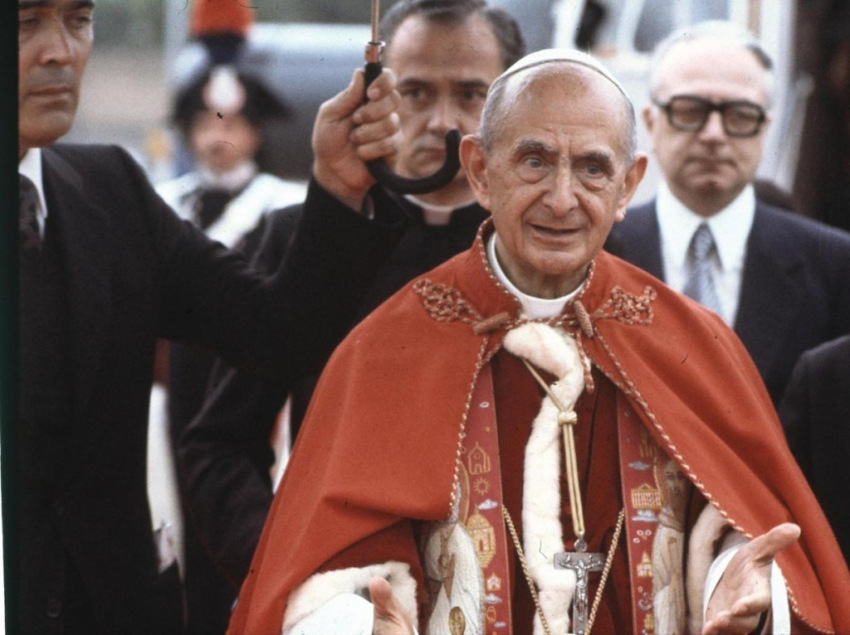
Giovanni Battista Antonio Maria Montini, from 1963 VI. Pope Paul (photo: magyarkurir.hu)
Gedeon , the head of the Holy See, on November 27, 1947, reported on his visit to the Deputy State Secretary Giovanni Battista Antonio Maria Montini they have received an answer so far. He told me to contact Cardinal Innitzer, who is in Rome these days, for further details. With reference to this, I contacted Cardinal Innitzer , who could not tell me significantly more recent moments, than that a confidant of your Eminence's previously indicated cs–y appeared at his place and he provided him with lines of recommendation to continue towards Germany. The cardinal also told me that he will speak about this at his interrogation the next day, before the Holy Father, His Holiness."
On March 30, 1948, Péterffy reported that he had read in the Hungarian press that the United States of America had rejected the return of the Holy Crown in a list, apparently despite Hungarian requests. Is the news true, what should he do, that's why he asked for the answer from Esztergom. However, on April 30, the Holy See's administrator reassured the cardinal. He spoke with the American charge d'affaires, Parsons , who stated: "their policy regarding the Holy Crown has not changed, they said almost emphatically that they have no intention of returning it to the government." The Holy Father declared - as Péterffy - that "new steps are being taken. So now hardly anything can happen to the Holy Crown without informing or asking the Vatican about it."
Months later, however, the situation changed. On September 10, 1948, Péterffy already informed the cardinal that "in the case of the Holy Crown, the decisive word is represented by the opinion of the ambassador from Budapest. I will repeat the idea that, being a sacred object, it should be provided with a suitable place of grace, so that a western shrine could come into question. However, change or measures can hardly be expected as long as diplomatic relations exist between the two governments."
After that, the holy object also became the protagonist of a fabricated trial - as the cardinal recalled - "among the most serious accusations and their evidence was the fact that 'I prevented the Holy Crown from being brought home so that I could crown Otto Habsburg with it at an opportune time . ' It was a trumped-up charge.
In March 1948, news reached the country that the United States of America would refuse to return the Holy Crown to Hungary, and the Vatican was also mentioned as a possible safekeeping location.

